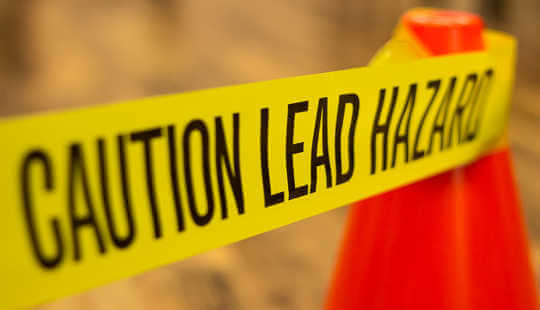This week is international lead poisoning prevention week. Interestingly, this global advocacy week has come upon us at a time when there is a national outcry against irresponsible and illegal mining (galamsey).
A staggering 1.5 million deaths globally were attributed to lead exposure in 2021, making this issue one of public health importance (Source: World Health Organisation).
Lead is one of the many heavy metals that can contaminate water sources and the soil due to galamsey. Lead is often found in gold ore, and can prevent the extraction of gold if not removed.
There are several ways of removing lead from the ore, including the use of mercury and cyanide.
It is the use of these toxic substances in an irresponsible and unregulated manner, among other things, that makes galamsey hazardous to the environment.
When lead enters drinking water as a result of the contamination of water bodies by galamseyers, or through the wearing away of materials containing lead in the water distribution system and household, humans are sure to suffer lead poisoning and its undesirable consequences.
Other sources of lead poisoning include types of paint, cosmetics, medicines, types of jewellery, toys canned foods, candies and through industrial sources (e.g. waste incinerators).
In 1999, about 80 Roma refugee children died and over 1000 suffered lead-related health problems because of exposure from a former lead mine and smelter in Kosovo where they were camped. Many more children suffered long term complications, including cognitive impairment, developmental delays and irreversible organ damage.
Unlike infectious diseases like cold or flu whose symptoms are often recognisable within a short time of being infected, lead poisoning can build up over time.
Interest
Lead poisoning is of grave public health interest because exposure to even low amounts of lead can affect the brain, influencing how one thinks, learns, and grows. It is instructive to note that there is no level of lead that is considered to be safe — especially for young children.
Children are at risk of lead poisoning because of their developing brains. Lead exposure during early childhood can damage the brain and other organs and cause developmental delays.
Children with low intelligence can struggle through school, later dropping out to ease the frustration.
This is an unfortunate loss of human resource with costly economic impact on a nation’s development and productivity.
Children are also susceptible to lead poisoning because of their ability to absorb up to four or five times as much lead as adults, when a smallest dose is even ingested.
Because of their curious nature and poor adherence to handwashing etiquette, their risk of exposure to lead-contaminated dust, soil and paint is also increased.
Children who compulsively consume non-food items are at particularly high risk.
Malnourished children also absorb more lead than other nutrients when there is deficiency in calcium or iron. This is how lead worsens malnutrition.
Pregnant women can suffer miscarriages, still births, premature birth or give birth to children with birth defects. In men, lead poisoning has been associated with low sperm count.
Lead distributed to organs,, such as, the brain, liver, kidney, lungs and heart damage them irreversibly.
As the world marks the week to highlight the preventability of lead poisoning, Ghanaians should rise up and resist activities that endanger their health before it is too late.
According to Walter Raleigh, prevention is the daughter of intelligence. It is also true that wisdom is proven right by her children. What will be posterity’s testimony?
The writer is a Child Development Expert/ Fellow at Zero-to-three Academy, USA.
E-mail: nanaesi_19@yahoo.co.uk

